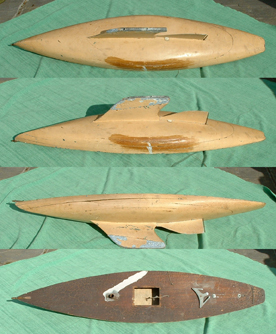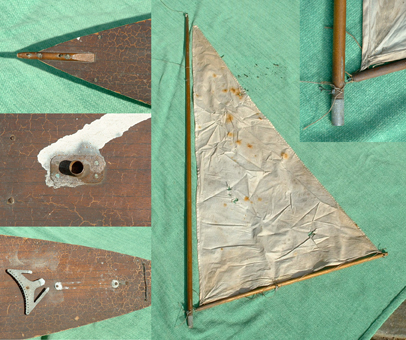


VMYG Comment:
This boat is in a style that matches the suggested date of the late 1930s. The design is, in all respects, what I would have expected from someone in the mainstream of model yachting. Despite this, the boat does not fit into any of the classes sailed at that time and the construction suggests that she is home built, rather than a commercial product or from a kit. The wide range of materials used for the metal parts suggests that she isn't a commercial product. Most likely she is built to a plan that appeared in a general craft magazine, rather than a specialist model yachting publication.
The use of yew, if it is yew, is very unusual. I rather doubt that it can be. If it is, the boat will be very much over its designed structure weight. Where does it float in the water? Subject to this proviso, there's no reason why she shouldn't restore very well. You may be interested in some of the titles published by the Curved Air Press